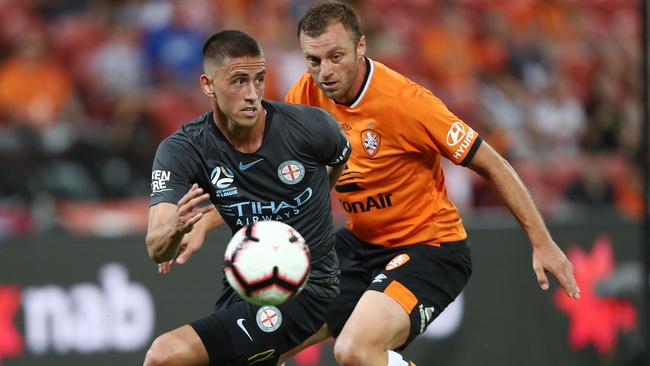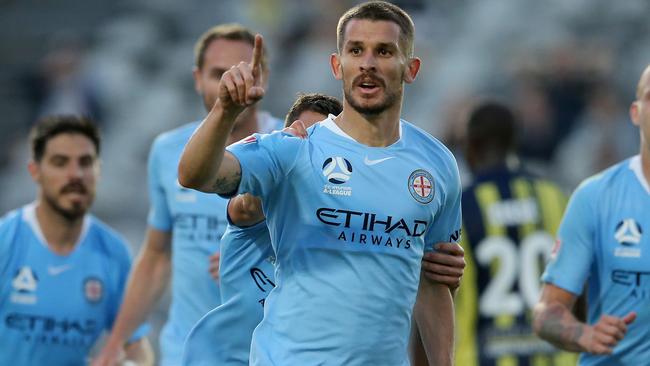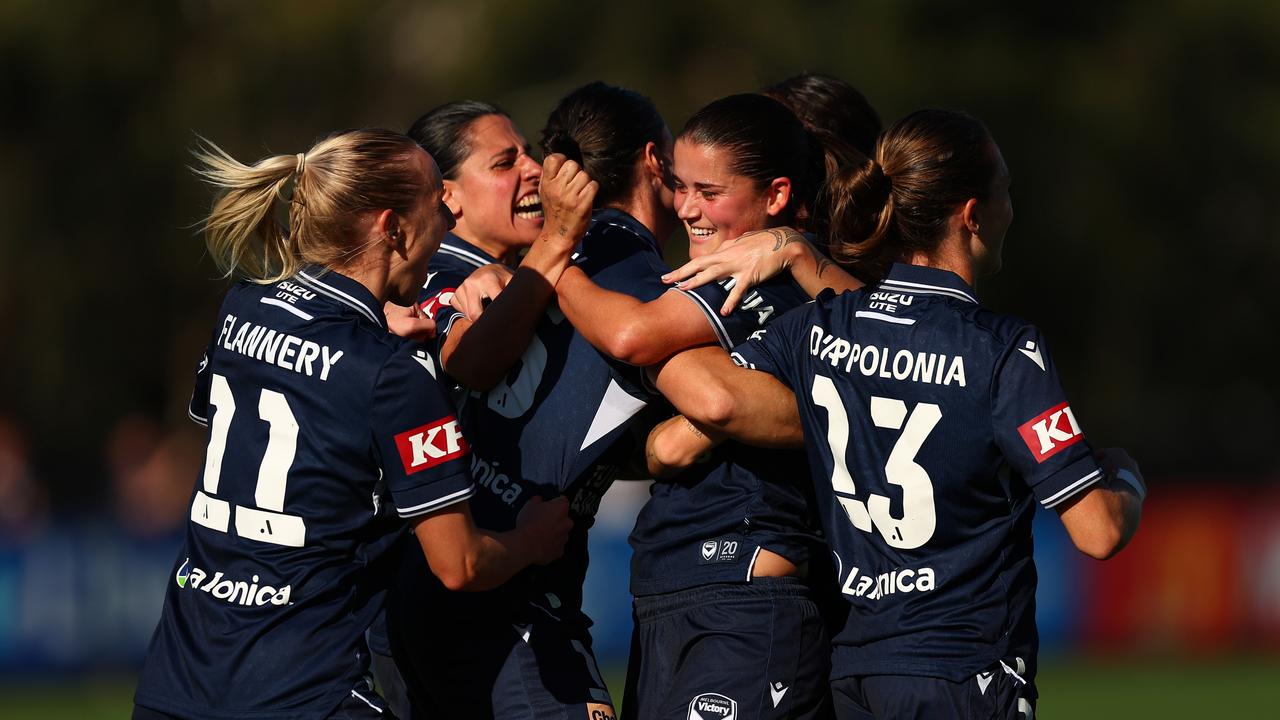Half of the A-League players face uncertain futures, Australians hit hardest by salary cap squeeze
MORE than half of A-League players are coming out of contract and unsure where they will be playing next season, with Australians players hit hardest by the salary cap squeeze.

A-League
Don't miss out on the headlines from A-League. Followed categories will be added to My News.
MORE than half of A-League players are unsure where they will be playing next season, with Australians hit hardest by the salary cap squeeze.
Aussies make up 112 of the 151 players who were out of contract when the list was released a fortnight ago, on par with last season’s total, accounting for more than 60 per cent of the A-League.
And 24 per cent are aged 20 or under, with the short-term contracts creating tension and contributing to fan favourites such as Daniel Arzani (Melbourne City) and Lachy Wales (Central Coast) leaving their clubs within months of breaking through.
CITY: FORNAROLI AXING ADDS PRESSURE ON JOYCE
STUDS UP: CHAT LIVE WITH DAVID DAVUTOVIC FROM 12pm (EDT)
CASH: EXPANSION BIDDERS FEAR MONEY WILL TALK
Liam Reddy, Dario Vidosic, Glenn Moss, Scott Jamieson, Mitch Nichols and David Williams are among the players that have five-plus clubs on their CV.
A survey commissioned by the players’ union found that fans were being put off by the high churn rate. The study found:
* 77 per cent of passionate A-League fans want to see more stable squads.


* 35 per cent of passionate fans considered not renewing memberships because players have left their club.
* Only 3.6 per cent don’t watch the A-League because their team is not successful.
Scrapping the salary cap and lifting the transfer ban between A-League clubs is on the agenda, ahead of the competition’s imminent transition to independence.
Leading player agent John Grimaud said he understood why clubs adopted such a short-term view in the current climate.
“If I was involved in a club, in the salary cap environment I wouldn’t be contracting players for too long. You end up with list-cloggers, as they call them in AFL,’’ Grimaud said.
“The better clubs are restricted with regards to how good they can become with the cap.”

Unlike the AFL, where clubs are obliged to contract drafted players for two years providing some stability, most A-League players are handed one-year deals as clubs struggle to balance the myriad of cap exemptions.
The players’ union advocates for a removal of the cap in its CBA manifesto sent to players recently, titled: ‘Better Together: Vision for the careers of Australia’s professional footballers’.
“The players are committed to pursuing the legitimate objectives of economic growth and sustainability, competitive balance, stability of membership and the development of world class footballers for our national teams,’’ the document states.
“If FFA and the clubs cannot develop a league model, regulate their market and regulate their labour in a way that achieves their objectives, then they should not seek to impose restraints on players. The onus sits with them.
“One dimension of the labour market that can complement the reform of the salary cap is the introduction of a transfer system and a move toward greater flexibility on player rosters.”


